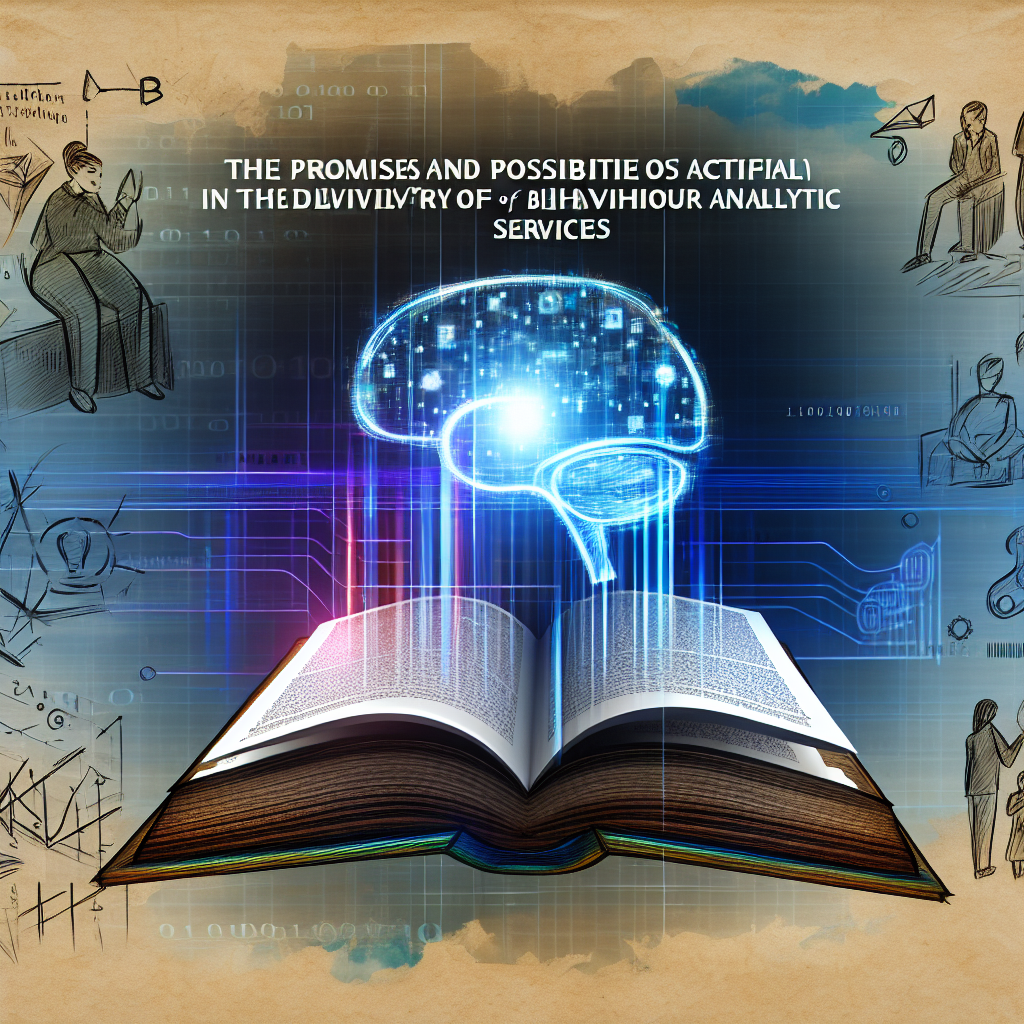The Promises and Possibilities of Artificial Intelligence in the Delivery of Behavior Analytic Services
Artificial intelligence (AI) is rapidly transforming many fields, including healthcare, education, and behavioral science. As behavior analysts seek more effective and efficient ways to support individuals, AI presents exciting opportunities for improving service delivery. A recent article by David J. Cox and Adrienne M. Jennings (2024) explores these possibilities and how AI can shape the future of behavior analytic services.
This blog post will provide an overview of AI, discuss its potential applications in behavior analysis, and highlight key takeaways from Cox and Jennings' research.
What is Artificial Intelligence?
At its core, AI refers to computer systems designed to perform tasks that typically require human intelligence. This includes learning from data, making decisions, and recognizing patterns. AI can be broken down into several key areas relevant to behavior analysis:
- Machine Learning – AI systems improve their performance by identifying patterns in vast amounts of data.
- Natural Language Processing (NLP) – AI analyzes and interprets human language, useful for assessing written or spoken communication.
- Computer Vision – AI can analyze visual data, including facial expressions and body movements.
- Robotics – AI-driven machines can assist in therapeutic interventions, especially for individuals with disabilities.
- Speech Recognition – AI listens to and processes spoken language for assessment and intervention.
- Symbolic Learning – AI mimics logical reasoning, helping automate decision-making in behavior plans.
These AI technologies are already being integrated into behavioral healthcare, offering innovative solutions for assessment, intervention, and ongoing care.
AI and the Behavioral Health Patient Journey
Cox and Jennings (2024) outline how AI could enhance every stage of behavioral health services. This patient-centered approach includes:
- Diagnosis & Assessment – AI helps identify behavioral health conditions faster and more accurately.
- Intervention Design – AI optimizes personalized treatment plans.
- Implementing Interventions – AI-driven tools support real-time behavior tracking and feedback.
- Intervention Withdrawal & Ongoing Monitoring – AI monitors progress after treatment ends.
- Administrative Systems & Processes – AI streamlines documentation and scheduling.
By integrating AI throughout the behavioral health journey, behavior analysts can enhance service delivery while reducing time-consuming tasks.
AI in Diagnosis & Assessment
Accurately diagnosing and assessing individuals is a critical step in behavior analytic services. AI can improve this process in several ways:
- Detecting Developmental and Neurological Conditions – AI algorithms analyze behavioral data and medical history to detect conditions like Autism Spectrum Disorder (ASD).
- Enhancing Functional Behavior Assessments (FBA) – AI identifies behavior patterns by analyzing large datasets, making FBAs more precise.
- Wearable Sensors for Behavioral Monitoring – Devices measure physiological and movement patterns to track emotional states and behavioral trends.
- Predicting High-Risk Behaviors – AI predicts behaviors like self-harm or aggression, allowing for early intervention.
- Improving Traditional Assessments – AI speeds up analysis and documentation, reducing the burden on clinicians.
By leveraging AI in assessment, behavior analysts can provide faster and more data-driven intervention plans.
AI in Intervention Design
Once an individual is assessed, AI can help design more effective intervention plans. The key benefits include:
- Predicting Intervention Effectiveness – AI analyzes past data to determine which interventions will lead to the best outcomes.
- Optimizing Behavior Plans – AI suggests individualized strategies based on real-time data.
- Automating Data Collection & Analysis – AI reduces manual effort by tracking progress and recommending modifications.
AI ensures that behavior analysts can make informed, data-driven decisions, improving intervention efficiency and effectiveness.
AI in Implementing Interventions
AI-driven technology supports behavior change by automating aspects of intervention delivery. Some exciting applications include:
- Virtual Assistants & Chatbots – AI-powered chatbots provide reminders, reinforcement, and self-guided support for individuals receiving treatment.
- AI-Assisted Skill Development – Programs use AI to adapt learning content in real time, helping individuals improve social, communication, and daily living skills.
- Robotics for Therapy – AI-powered robots engage children with ASD in structured learning and social interaction exercises.
AI tools act as valuable assistants to behavior analysts, allowing for more individualized and continuous support.
AI in Intervention Withdrawal & Ongoing Monitoring
Once a formal behavior intervention ends, AI can assist with long-term progress monitoring. Some possibilities include:
- Automated Behavior Tracking – AI continuously assesses behavior through apps and wearable devices.
- Personalized Maintenance Plans – AI identifies when a client needs additional support and recommends booster interventions.
- Predicting Relapse Risks – AI flags risk factors for regression, allowing behavior analysts to intervene before problems intensify.
By monitoring long-term behavioral patterns, AI ensures continued success beyond structured interventions.
AI in Administrative Systems & Processes
AI doesn’t just impact direct services—it also improves the efficiency of behavioral health organizations. AI-powered automation can:
- Streamline Documentation – AI drafts reports, summarizes session data, and organizes treatment plans more efficiently.
- Optimize Scheduling & Staffing – AI predicts appointment no-shows and optimizes staff scheduling.
- Improve Insurance & Billing Processes – AI automates claims processing, reducing administrative burdens.
These advancements free up more time for behavior analysts to focus on delivering quality care.
The Role of Behavior Analysts in AI Development
As AI becomes more integrated into behavior analysis, professionals in the field have several important roles:
- Ethical Oversight – Ensuring AI tools align with ethical guidelines and do not replace human judgment.
- Data Interpretation – Using AI-generated insights to enhance, not replace, clinical expertise.
- Training & Implementation – Helping design AI-informed interventions while ensuring technology is used appropriately.
The expertise of behavior analysts remains crucial, as AI should be seen as a tool to support—not replace—human decision-making.
Final Thoughts: The Promise of AI in Behavior Analysis
AI has the potential to revolutionize behavior analytic services by enhancing assessments, optimizing interventions, and improving administrative efficiency. However, its use requires careful ethical consideration and collaboration between AI developers and behavior analysts.
To stay informed on AI’s role in behavior analysis, be sure to read the full article by Cox and Jennings (2024): "The Promises and Possibilities of Artificial Intelligence in the Delivery of Behavior Analytic Services".
As AI continues to evolve, behavior analysts must remain proactive in integrating these tools while maintaining the highest standards of ethical and effective care.



